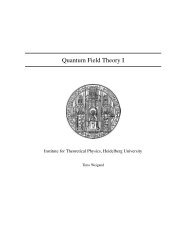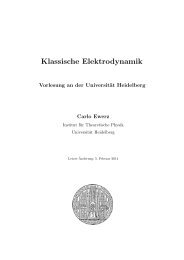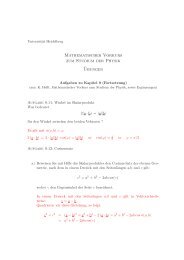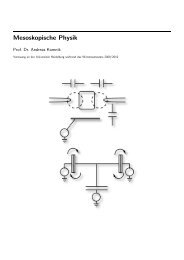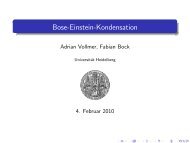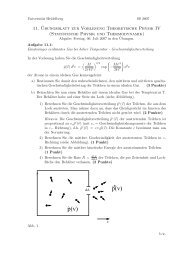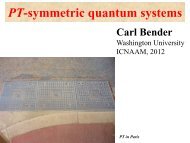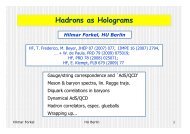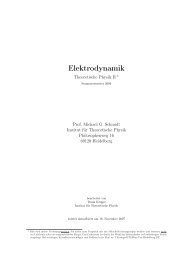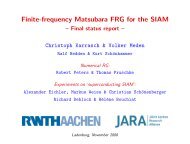Turbulence and Bose Condensation - Institut für Theoretische ...
Turbulence and Bose Condensation - Institut für Theoretische ...
Turbulence and Bose Condensation - Institut für Theoretische ...
You also want an ePaper? Increase the reach of your titles
YUMPU automatically turns print PDFs into web optimized ePapers that Google loves.
A Superfluid Universe<br />
Kerson Huang<br />
MIT/<strong>Institut</strong>e of Advanced Studes, Nanyang Technological University, 60<br />
Nanyang View #02-18, Nanyang, USA/Singapore 639673<br />
Particle physics tells us that the vacuum is a dynamic medium possibly filled with<br />
complex scalar fields. Condensed matter physics tells us that a complex scalar<br />
field, whatever its origin, serves as order parameter for superfluidity. Considering<br />
the implication of all this on a cosmic scale, one comes to the conclusion that the<br />
universe may be a superfluid. We describe the emergence of such a superfluidity<br />
during the big bang, in terms of a mathematical initial-value problem based on<br />
Einstein’s equation. This is made possible by using the Halpern-Huang scalar<br />
potential, which is asymptotically free. The solution shows that the universe<br />
exp<strong>and</strong>s with accelerating rate, with an equivalent cosmological constant that<br />
decays in time according to a power law, <strong>and</strong> this gives dark energy without the<br />
usual fine-tuning problem. The dynamics of quantized vorticity allows the growth<br />
<strong>and</strong> decay of a superfluid vortex tangle (quantum turbulence), in which vortex<br />
reconnections can create all the matter present in the universe. The inflation era<br />
is the lifetime of quantum turbulence, according to this model. As for the present<br />
universe, the energy density of the superfluid is dark energy, <strong>and</strong> deviation of the<br />
superfluid from uniformity, due to the prescence of galaxies, is observed as dark<br />
matter, through gravitational lensing. Vortices surviving from the Planck era had<br />
core diameters growing from Planck length to the order of 108 light years. These<br />
giant vortex cores could explain the galactic voids now observed. Vortex reconnections<br />
generate two opposite jets of energy, which could explain cosmic jets.<br />
A collapsing rotating black hole in the superfluid would be covered with "hair"<br />
in the form of vortex filaments, which could explain the "non-thermal filaments"<br />
seen near the center of the Milky Way.<br />
17



